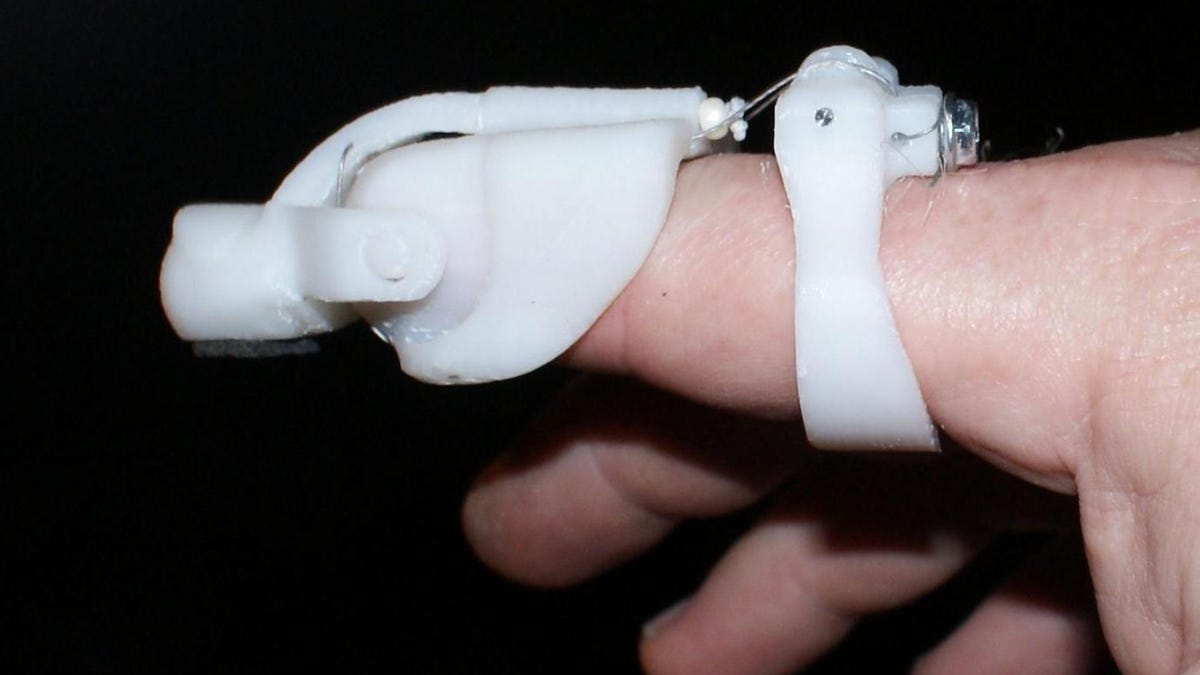Maker 3D-prints himself a prosthetic flexing fingertip
A determined maker without health insurance learns the ropes of 3D printing to make himself a new fingertip.

After Christian Call suffered an injury on the job and lost the tip of his right index finger, he was determined to find a prosthetic. "Initially I was trying to acquire a life-like prosthetic, but none of them actually worked and the price was out of reach," he told Crave. A few years ago, Call might have simply been out of luck, but advances in consumer 3D printers put him on the path to finding a solution.
Call's journey to create a fingertip started on YouTube. He was browsing and came across a video of a massive 3D printer cranking out plastic wrenches. That got him started on a search for a 3D printer of his own. "I had to have a 3D printer," he said. "I felt that with a 3D printer I could explore a whole new level of creativeness."
After his injury, Call was let go from his 22-year job and had no insurance. Professionally made prosthetic options were well out of his price range. "I had no idea what a homemade prosthetic would cost but suspected that I could make something for much less than what was offered," he said. He took his skills as a master mechanic millwright and hobby machinist and combined them with his newfound interest in 3D printing.
The prosthetic fingertip was made using an Up Mini 3D printer, a sub-$1,000 machine. When Call squeezes the finger toward his palm, the device moves, so it behaves mechanically like a real fingertip. He created a version that includes a magnet on the tip for picking up metal objects.
Call has been working on the project for a year and a half. "Part of that time was spent wearing my different designs for weeks at a time to work out the problems with them and advance the design," he said. "The function and comfort is quite good. I model the cup part of the prosthetic as close to my actual finger as possible and if need be I can file the pieces for a better fit and function."
Other people in need of a fingertip prosthetic have gotten in touch with Call, and he has worked on outfitting them with his design. He has made other 3D designs available for free on sites like Thingiverse, but doesn't plan for this to be one of them.
"In the beginning, I saw the attraction to giving away files for recognition and to help fire the interest in 3D printing, but now I think 3D printing needs no help and is surely here to stay," he said. "I feel my time is worth something and if I can help people with my skills and make a little money doing it, then that is what I will do."
He is open to creating prosthetic fingertips for more people, but he encourages them to try the process themselves, and to design and print their own solutions. "Even if it seems too hard to make, you will learn from it and do better next time. This is how I did it," Call said.
Call's DIY philosophy may represent the ultimate fulfillment of the promise of 3D printers. It brings us closer to an imagined future world where 3D printers are as common as paper printers, and people just sit down, design, and create the things they need. The process may take multiple steps along a learning curve right now, but makers like Call are paving the road for widespread use of 3D printers for the greater good, one person at a time.
(Via 3Dprint.com)

